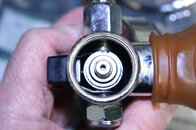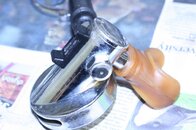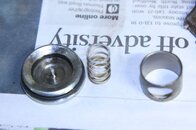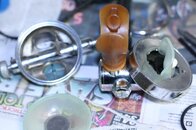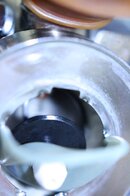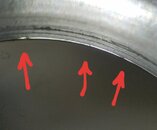@John C. Ratliff If you have a copy of the Pilot manual could you post it here please?
Unfortunately, I do not have a copy. I thought it would remain on the VSS website, and usable. Apparently, Tony Christianson reach a photo limit on Flikr, and Flikr deleted it last spring. I have not been successful in re-contacting Tony via PM. He is sometimes available on-line, and sometimes not, as he lives inside Yosemite National Park. I'm pretty sure he still has the scans of the manual, and that eventually we can get it from him.
I found two adjustments critical in the functioning of my Pilot.
--One is the adjustment via a small Allen wrench where the demand lever interfaces with the valve. This was the source of the leak in mine, that this set screw, #56 in the patent diagram below, was adjusted too tightly.
--From the manual, I found out that the Venturi adjustment is critical in preventing the "chattering" of the pilot valve. You need to move the Venturi opening way to the side, so that when the purge button is depressed, the flow stops by itself. If it continues, it is set for too much flow, and will at times chatter too. Also, if the Venturi opening is directed directly down the mouthpiece, it can actually overpressure the lungs--not good. So carefully adjust the Venturi opening so that the flow just stops by itself.
'Hope this helps. Below are photos of my Scubapro Pilot. One of our members at VSS has two Pilots, and has disassembled one and placed it into his A.I.R. I housing; according to him, Morris75, it fit perfectly. Here's where you can see his post:
http://vintagescuba.proboards.com/thread/4966/scubapros-pilot-regulator-2?page=2
The Christianson patent has some really good diagrams in it, one of which I'll post here too.
US4076041A - Pilot valve operated demand regulator for a breathing apparatus - Google Patents
SeaRat



